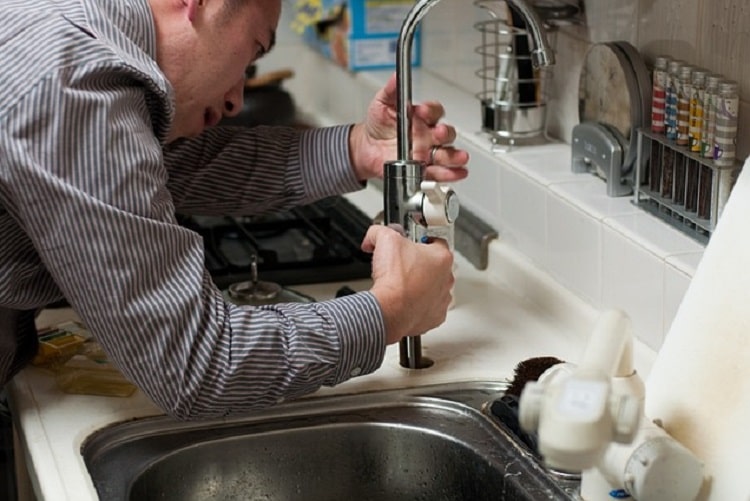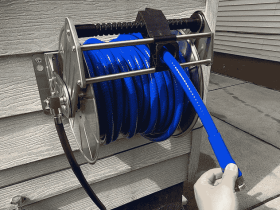Plumbing systems are highly prone to freezing during winter. When outdoor temperatures go down, plumbing pipes and lines can freeze or even break, resulting in expensive repairs. It may also lead to unresponsive water heaters and damaged outside drains. Basement flooding, frozen septic tanks, and clogged drains are other winter plumbing problems you may experience.
Preparing your plumbing system for winter prevents inconveniencing costly repairs while ensuring optimal safety and comfort in and out of your home. Discussed below are six essential winter plumbing tips.
1. Hire a plumbing technician for preventive maintenance
Preventive maintenance comes in handy when trying to get your plumbing system ready for winter. It’s a comprehensive service that covers every aspect of your plumbing system to prevent emergencies you might experience during winter. The preventive maintenance service may include:
- Spotting and repairing water leaks
- Inspecting your system for corrosion signs and repairing it to prevent bad connections and leaks
- Checking the water heater for sediment buildup and internal corrosion
- Testing water pressure to ensure all is well
- Examining and servicing heating equipment like furnaces and heat sumps to ascertain they’re operating properly
Based on where you live, an online plumbing service search, such as Plumbing Utah, can help you find a local plumbing company you can trust and then schedule preventive maintenance with them to safeguard your property and plumbing system from winter effects.
2. Insulate your water pipes
Leaving your pipes exposed to the extremely cold winter temperatures increases freezing and bursting risk. Frozen pipes usually expand, and if not well thwarted fast, they can burst and result in expensive water damage to your property. Insulation keeps your water pipes from freezing and possibly bursting while ensuring constant water flow throughout winter. In winter, pipes should be adequately insulated to ensure temperature consistency, meaning even if outside temperatures drop, the pipes’ function will hardly be affected as they’re already protected.
When pipes aren’t properly insulated or insulated at all, they lose heat faster, which can be an inconvenience for any operation that needs hot pipes or hot water. Proper pipe insulation makes it easier for water to maintain its temperature, reducing the risk of reheating and helping minimize heating expenses. There are different insulation materials you can use on your pipes, including heat tape and foam sleeves. Focus more on pipes in unheated areas like attics, basements, crawl spaces, and garages.
3. Turn off the outside water
Most residential properties have at least one hose bib or faucet, which is connected to splitters or hoses. These fixtures and the pipes adjacent to them are highly prone to freezing during winter as they’re exposed to outdoor weather. In these freezing conditions, leaving the pipes with water throughout the winter season increases the risk of bursting or breaking because of frozen water. This may result in expensive pipe replacements or repairs.
Fortunately, turning off the outside water can help protect your water lines from winter damage. Remember that insulation only keeps your water pipes’ temperature close to that of the water inside.
Note that the heat your home radiates won’t be enough for the pipes heading outside even when insulated because insulation only keeps heat from escaping but doesn’t add heat to the pipes. As such, the outdoor water pipes may still freeze when constantly exposed to extended freezing temperatures. This means you should turn off outside water regardless of whether pipes and faucets are insulated or not.
4. Check your water heater
Winter’s cold weather affects your whole plumbing system, the water heater included. Exposing water heaters to low temperatures causes them to strain more because they work harder and longer to ensure adequate hot water supply. The water delivered to the water heater in winter is usually colder than usual due to the low temperatures outside, meaning the heater has to overwork to attain the desired water temperatures.
Your hot water demands also rise during winter. Since a lot more energy is required to heat the water and meet your high hot water needs, energy bills are bound to increase. Getting your water heater ready for winter can help avoid these issues. To do so, consider:
- Raising your water heater’s thermostat temperature
- Scheduling routine water heater maintenance
- Upgrading to a tankless water heater
- Upgrading old faucet aerators and showerheads
- Insulating plumbing pipes to ensure the water doesn’t get too cold
If you notice signs that your water heater needs repair, including water temperature fluctuating drastically or water heater leaking, get it fixed immediately to ensure a constant hot water supply throughout winter.
5. Keep your home warm
Keeping your home warm during winter is essential to ensuring the water pipes don’t freeze or break. The indoor home temperatures help safeguard your plumbing from the freezing temperature’s harsh effects. To ensure a warm home, consider:
- Scheduling a professional heating system inspection to ensure it’s running optimally. This will help consistent temperatures all through winter, keeping your pipes from freezing
- Raising your thermostat’s temperature settings to maintain an appropriate and consistent indoor temperature that will keep the pipes from freezing
- Insulating vulnerable parts where pipes are located, such as crawl spaces, attics, exterior walls, and basements. With proper insulation, you can retain heat and keep cold air from getting to the pipes
- Opening under-sink cabinet doors to allow warm air to circulate, particularly in areas with pipes. This offers an additional safeguard against freezing
6. Seal drafty areas
Identifying and repairing possible cold air entry points can help prevent pipe freezing and bursting. Drafty areas can let chilly air into your home, risking your plumbing system. To address this issue, begin by inspecting your property to find drafty areas. These areas may include:
- Gaps around doors and windows
- Cracks on walls or foundations
- Openings around utility lines and pipes
Once you’ve spotted the drafty areas, seal the cracks and gaps with the right materials like expanding foam, weatherstripping, or caulk. For doors and windows, use draft stoppers or apply adhesive weatherstripping to make a tight seal.
Since door and window seals can degrade over time, check their condition to see if they require replacement. As for the utility lines and pipes, insulate them well to protect against the cold. Sealing these drafty areas not only prevents inconveniences and costly repairs but also ensures a cozy home for winter.
Endnote
Being proactive in safeguarding your home’s plumbing system during winter can be quite helpful. Consider implementing these tips for seamless plumbing winterization.











Leave a Review